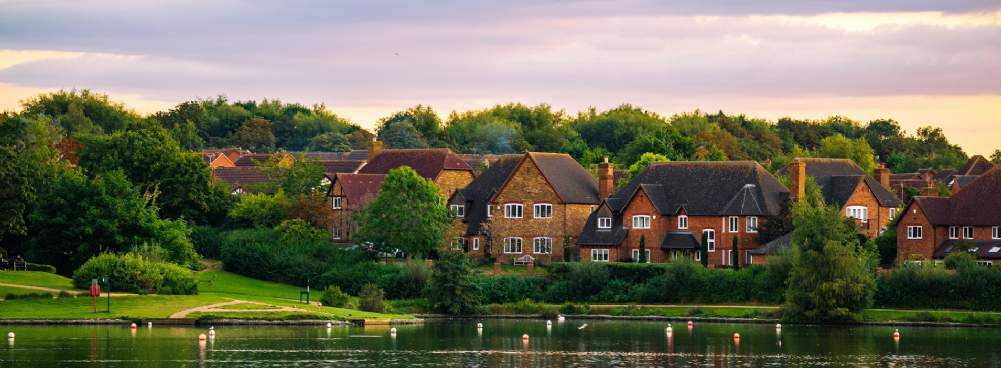Recent Savills publications have highlighted the importance of water: the springboard for our Spotlight on water was the power water has to transform a society, and the first episode in our Nature Based Solutions podcast (July 2023) quoted the UN, reminding us that climate change is primarily a water crisis.
Water is fundamental to life and is being challenged by the triple pressures of climate change, a growing population and the need to protect the environment. It is a finite resource. In England, if no action is taken between 2025 and 2050, an additional 3,435 million litres per day will be required for drinking supplies and a further 1,300 million litres per day for non-public water supplies such as agriculture. This raises a couple of questions, the first question being, where would this water come from and secondly, how do sectors prepare for this shortfall?
The response from the water companies
Water companies are required to produce water resource management plans (WRMPs) every five years. These plans enable supply and demand planning for the next 25 years and they drive the solutions to meet these requirements. Currently water companies have a range of Strategic Resource Options (SROs) – solutions – on the table from reservoir construction to intra- and inter-regional transfers.
One project already underway is Anglian Water’s Strategic Pipeline Alliance (SPA). It is said to be one of the largest infrastructure projects in the UK for a generation. The project will see hundreds of kilometres of new pipeline allowing water to be moved from areas of surplus to areas of deficit within the region.
The need for a multi-sector approach
The agricultural sector does not have water resource management plans, it has not been regulated to produce them and historically it has been seen as too complicated – how would thousands of agricultural abstractors be able to produce these plans and at what scale would they be produced? Individually? By catchment? Regionally? At a national level?
We are seeing a solution come forward from the Water for Food Group. This group is an independent forum of stakeholders and decision-makers from the agricultural and horticultural sectors who aim to raise the profile of water for food production. The group has been focused on producing a water resources management plan for the agri-food sector, to allow the long-term planning and solution provision.
What if then, we had a scenario in which all sectors had water resources management plans that could be collated at these various scales; catchment, regional and national, to ensure the solutions implemented were multi sector. For example, could we see a position where the SPA project could have been developed to allow agriculture access to the water being transferred?
This multi-sector planning is the aim of England’s national water resources framework, and the five regional groups within it. As we come to the end of the first round of planning it has been acknowledged that the multi-sector approach has not been fully achieved, but the barriers have been recognised and work has started to look at how these can be overcome ready for a second round of planning to start in 2025.
What does the future look like?
What we need is an integrated approach to manage and utilise this precious resource efficiently and effectively. Looking at how we manage water, be that water quality, in times of flood and in times of drought, will need a collaborative approach across all sectors. A national water grid, perhaps?
All sectors will need to assess their water requirements for the future and ensure they have the solutions in place to meet their needs whether that be for food production, environmental protection or energy generation, and, ultimately, for business sustainability.
Further information
Contact Kelly Hewson-Fisher

.jpg)
.jpg)
.jpg)
.jpg)

.jpg)


.jpg)
.jpg)